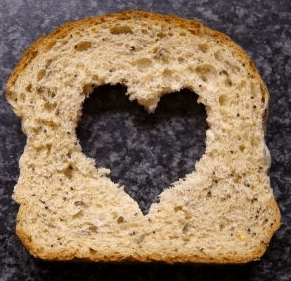Reframing Food Consumption in Eating Disorder Recovery
Raised in a mixed French and Irish household, the stove was the center of my childhood. I guess that made me predestined to be a foodie who now enjoys food, wine, cooking and baking. As I made my way through eating disorder recovery, I also found myself taking comfort in learning how to prepare most of the foods I grew up with, but used to deny myself for many years. Often, people who meet me now are a bit perplexed about how I can balance a passion for food, knowing that I struggled with an eating disorder for a number of years. I thought I’d share a little bit of how this "works."
Knowing What Being Hungry Feels Like
Recovery meant that I had to learn to listen to my own body. My body would send me signals that it was hungry or, on the contrary, full, and I needed to realize and honour its wishes. This was the starting point for me because only when I was able to assess that I was hungry, could I then focus on what I felt, or didn’t feel like, eating. It seems pretty basic to most people, but after having spent many years without really knowing what feeling full, or rather nourished, felt like, it ended up being a big relief for me to know that I could determine this on my own, once I processed my corresponding feelings.
Over time, as I developed and practiced this skill, I stopped needing to rely on therapy in order to deal with the emotions I was identifying with. It also allowed me to eventually detach the ideas I had surrounding hunger, bingeing and self-image, from the self-harm done via food consumption or deprivation. This eventually led me to develop coping mechanisms and systems in order to learn how to enjoy food and eating in general.
The Difference Between Mild Restraint and Fully Withholding
As I’ve previously shared, I love the tastes, scents and memories that food can elicit. A key moment for me in eating disorder recovery was when I realized that I could still eat a small portion of the specific food I was craving, even if it was indulgent, as opposed to forbidding myself to have it altogether.
One trick that helped me manage this was to create a list of the foods I liked and disliked, and the corresponding feelings each dish brought about. It sounds very simple yet it’s eye-opening to see a list of the foods you despise and the feelings associated with them. That alone can help you dig deeper into the associated memories, whether positive or negative, linked to each dish. In making that list, I encourage you not to censor yourself. Don’t suppress the urge to write down your honest feelings, as, after all, it is for you, and what you get out of it will be a result of what you put into it.
In my case, I had listed that I hated turkey because it reminded me of struggling during the holidays, and equally despised popcorn, because it was associated with the social pressure I felt during high school. The reason I bring those up now, is because they helped me realise a common link -- both foods, while otherwise benign, had associated themselves in my mind with the feeling of being pressured to eat in public. Once I realized that, as you can imagine, my recovery took a leap forward.
Knowing when to stop from eating and when to start are pretty basic concepts to most people, but if like me, when in recovery, they can be a big struggle.
Therefore, it might be difficult to go through this even when you find yourself surrounded and supported by friends and family. My suggestion to you is to focus as much as possible on your well-being and to channel your thoughts towards feeling comfortable around food and social gatherings where food is present. Little by little, a big change will eventually take place the more you experience subtle shifts in how you feel about eating in general. It did for me, and I have no doubt you could experience the same.
APA Reference
Lemoine, P.
(2014, July 29). Reframing Food Consumption in Eating Disorder Recovery, HealthyPlace. Retrieved
on 2024, April 19 from https://www.healthyplace.com/blogs/survivinged/2014/07/reframing-food-consumption-in-eating-disorder-recovery
